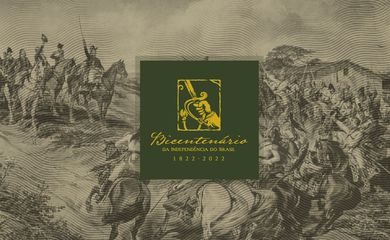Exact location of the proclamation of Brazil's Independence is rescued

Researchers have recovered the location of the exact spot where Dom Pedro I proclaimed Brazil's Independence, on September 7, 1822. According to Jorge Pimentel Cintra, professor at the Paulista Museum of the University of São Paulo (USP), the location was physically marked "quite accurately" at the beginning of the 20th century, but over the decades, a series of confusions and misunderstandings caused the information to be lost.

Cintra says that the Historical and Geographical Institute of São Paulo determined, in 1902, the location, within the perimeter of where Independence Park is currently located, in the southern zone of São Paulo. "In that place a mast and a stone were placed, as can be seen in the photos of the time. And they remained there until 1921 or 1922, when the gardens were remodeled, with major excavations," he relates.
After the removal of this landmark, other points began to be assigned, such as the place where the Independence Monument was installed, work of the artist Ettore Ximenes, inaugurated in 1922, during the celebrations of the centenary of Independence. There is also the famous painting by Pedro Américo, which helped form the imaginary about the moment, although it is not historically accurate.
There was also a foundation stone that had been placed, according to the researcher, in the wrong place. "The place that was imposed is located in the garden above Rua dos Patriotas, next to the first fountain, for those who go up," he says about the first attempt of demarcation that, mistaken, contributed to increase the confusion on the subject.
According to the researcher, it is not known why this mark was placed out of place, since the point was accurately measured at the time (1825), when it was intended to erect a monument on the site.
Maps and GPS
Cintra has been researching the subject for three years as part of a study on the trajectory of Dom Pedro on September 7. To pinpoint the exact point of the cry, the professor analyzed the reports of four witnesses who were present at the time of the historic event. In addition, he turned to the September 1825 minutes of the São Paulo Municipal Chamber. "It gives precise information about the location: 184 fathoms [104.8 meters] from the southern head of the bridge over the Ipiranga stream. Engineers, topographers and people who witnessed the event and lived in the region were present at the demarcation," he details.
Despite the accuracy of these indications, Cintra states that changes in space over time make it difficult to locate. "The greatest difficulty was determining the position of the bridgehead in 1822, because the river was straightened and the bridge was destroyed. To do this, I turned to old maps that showed the river and the bridge before the straightening," he says.
The old maps were overlaid with a digital mapping program. With this information it was possible to mark the park using a satellite positioning system (GPS).
The correct point is in a forest, on the left side of the park, if the observer is facing the Paulista Museum. The work was detailed in an article signed with researcher Alexandre Cintra.
For the researcher, having the exact point, despite not changing the essence of the understanding of the historical fact, allows him to examine details of the situation, such as the movements of the messengers and the honor guard of the then Prince Regent.




